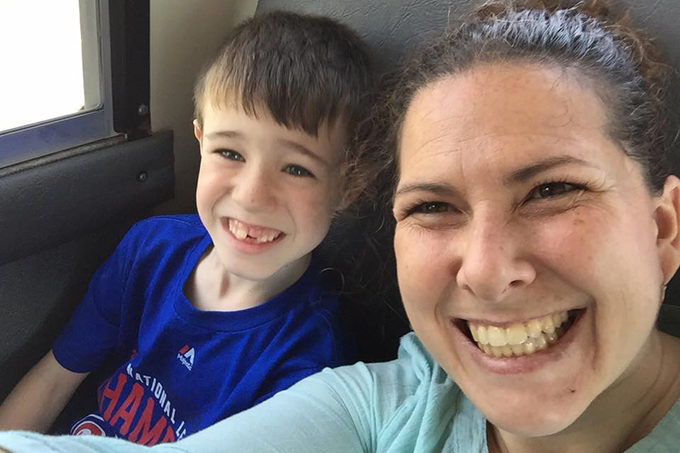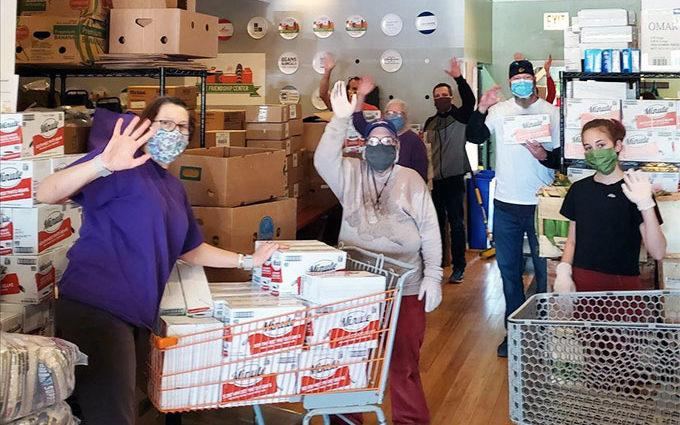This is a guest post from community member and volunteer Jaime Freedman

Last weekend for the first time in my life I used what most people would call “food stamps.” At my local grocery store, I loaded up on regular items for our household: organic cheese & salami, broccoli, Greek yogurt, whole milk, and ice cream. As I swiped my EBT card I held my breath waiting for the card to work and then – completely unceremoniously – the cashier handed me a receipt. I left the store smiling, because I knew that after that one little moment of wondering whether my card would work at checkout, I could turn around and make sure another family didn’t have to have that same experience. I went home and donated $457 dollars to my neighborhood food pantry and an anti-violence organization – local organizations our family supports.
This month, thanks to a federal aid program over 1 million Chicago Public School children will receive a Pandemic Electronic Benefit Transfer card with hundreds of dollars on it for food purchases. This card is for EVERY Chicago Public School student, not just those in need. As a mom of three public school children, soon to be four (my youngest will enter kindergarten in the fall), I have been fortunate enough to not need food assistance throughout the pandemic. As a volunteer working with my local food pantry, The Friendship Center (2711 W Lawrence Ave), I have seen firsthand how many households have been impacted by COVID. After years of working within my local school community to develop a program to address basic unmet needs, I know how many were families were already struggling before this all started.
Our Families need the extra help right now.
Working in partnership with Waters Elementary School and The Friendship Center, four years ago we launched a program called Circle of Help, where we connect families in need with a wide range of things beyond groceries: backpacks, school clothes, laptops, summer camp. It started when a few parents at my children’s school were made aware of a mom who couldn’t afford to buy diapers. When I asked our principal how many families were in this situation, she threw up her hands and said “more than you think”. With a growing awareness of how many families were struggling with basic needs, and how much this problem was hidden and unaddressed, I knew there was something we could do. With a local food pantry partner who could provide basic needs at scale and scores of families willing to pitch in to help fill in the gaps, we created an innovative and responsive model for leveraging all of our available resources to offer as much support as possible. We see the positive impacts of the program every day on young people in our school community who have the resources they need to learn and thrive – even through a year as challenging as 2020.
One lesson I’ve learned through all of this is that neighborhood organizations and programs like these need our support in a variety of ways. Volunteering and in-kind donations are critical components, and not everyone can afford to give financially. With this unexpected EBT card coming in the mail, I was glad to have an opportunity to give in the way that offers maximum flexibility for our local non-profits to creatively respond to the challenges they face – by donating in real dollars.
Dollars go further.
Handing over physical items to a food pantry or an organization feels good for everybody. Buying a Christmas present or box of cereal – items one can physically touch and load up in your trunk – provides a tangible sense of accomplishment and a real feeling of helping. And there’s nothing wrong with that! If you get involved with your local food pantry – through a school activity, a religious group or volunteer opportunity – you’ll find that you immediately start to develop a better understanding of what their shifting need items can be from week to week, and how best to support in that way. Reach out to ask and you’ll find that there are plenty of targeted areas where in-kind donations – either of unused items from home or bought at a store – can be a big help to fill in gaps in the food stream.
But a can of corn doesn’t pay the utility bills. It doesn’t fix the busted wheelchair ramp or pay the person who runs the place. Your pantry might already have two pallets of canned corn but zero fresh fruit. Depending on the facility, there may not be room to store that can until next February when it’s really needed. Buying in bulk through suppliers like the Greater Chicago Food Depository allows food pantries to supply more food to more people. It allows them to always have basic staples on hand, and to develop networks that rescue unused food from local restaurants and supermarkets. It allows them to invest in programs like mine that tackle “next level” needs for families in our schools.
With $450 – the Friendship Center can source enough food to feed 18 families for an entire month.

This has been a long 13 months of virtual and/or hybrid school for every Chicago family. We’ve seen more of our children than ever. We’ve made them more meals than we can count. A lot of us are tired and can use some extra help. If these EBT cards are a needed boost for your family’s finances, then it’s doing what it’s supposed to do. But if your household doesn’t need the money right now, then there’s a real opportunity here to do some good. We can take our kids shopping for the food they like with EBT cards and then we can turn around and give the equivalent dollars back to those organizations that have been lifelines to those in need. If you are looking for a deeper involvement, go volunteer also! There are always boxes to be moved and they’ll be happy to have you there. But first, go use your EBT – buy your orange juice and lunch meats and cheerios – and then turn around and write a check. Believe me – you will feel fantastic for doing your part!
To learn more about The Friendship Center, their services, and how you can support their work, visit www.friendshipcenterchicago.org.